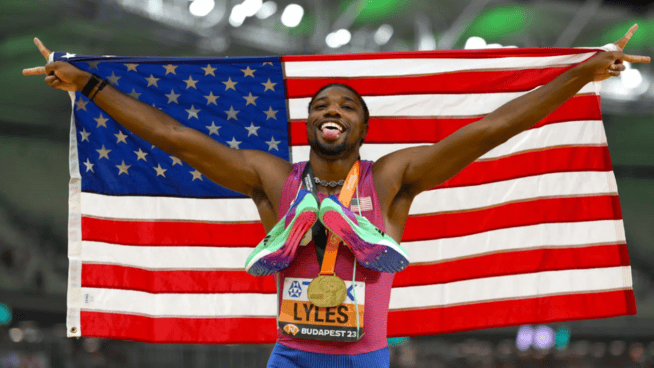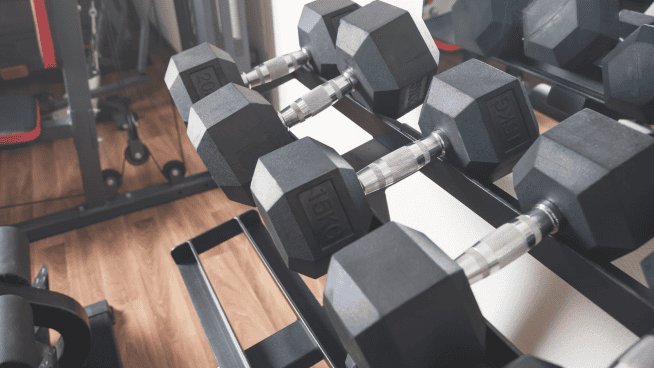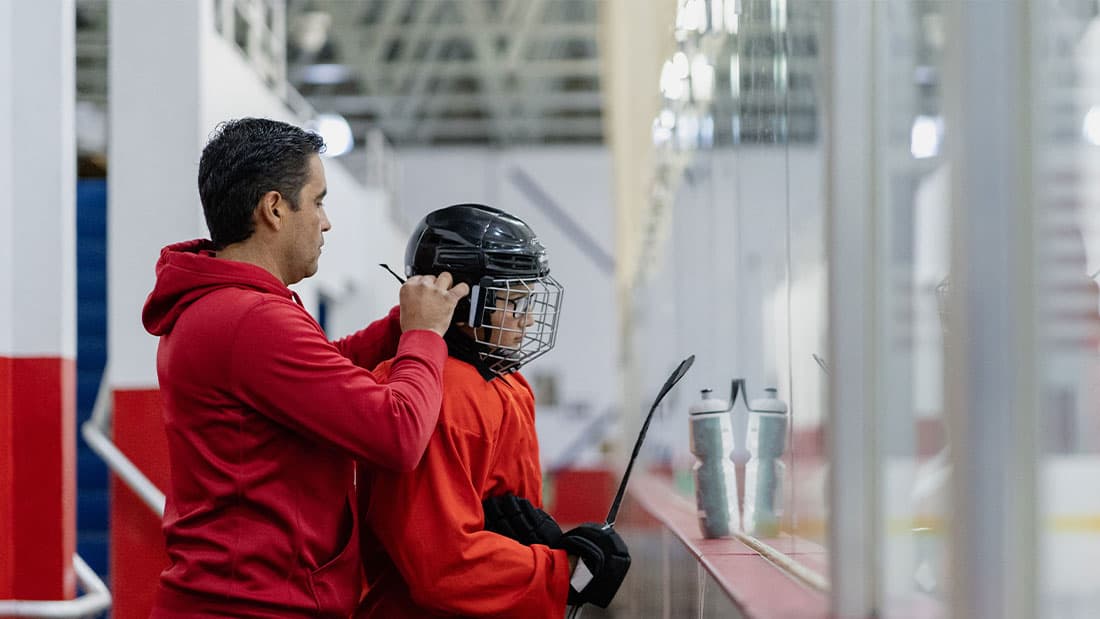Does Balance Training Improve Speed?
In the world of sports, speed is king. Athletes, parents, coaches, and trainers always ask me if different forms of balance training create noticeable improvements in running speed. And rightfully so, with all the information out there, that’s a great question. Instead of giving you just my opinion, I’ll give you the scientific research and facts that I have on the matter, but first I want to briefly discuss the definition of balance-stabilization-based training, and break this type of exercise down into 2 essential categories.
Balance Training Defined…
Balance is the ability to position your center of mass over your base of support (hands or feet) during movement. More specifically, it’s the ability to limit too much motion from occurring at a specific joint or series of joints. For example, the simple task of balancing over one’s foot requires that the ankle, knee, and hip prevent too much acceleration in 3 planes of motion simultaneously so that we stay centered. To do that, there are some very intricate feedback loops from several built-in sensory structures throughout the body that transmit information from the internal and external environment (i.e. training surface, body position, etc.) to the central nervous system.
Propriocecption
Next, specific centers of the brain process all the incoming neural input, that’s called proprioception. Then, the appropriate motor response is triggered, based on the information at hand. What’s incredible is that all these functions happen within milliseconds, and it’s something we don’t even consciously consider and just take for granted. Without this skill, we would be tremendously limited physically, and practically rendered useless. This all sounds helpful, but the bottom line is, does training to improve balance actually help us become faster and more athletic?
First, let’s quickly dissect balance training into 2 types;
Type #1-Stable Surface Balance Training: Maintaining our center of mass over our base of support on top of an immovable surface. (i.e. running and cutting on a football field)
Type #2-Unstable Surface Balance Training: Maintaining our center of mass over our base of support on top of a movable surface. (i.e. balancing on a Bosu ball)
Before we dive into the research each type has on speed levels, let us first take a look at a very significant portion of human anatomy. The LOS system (Lateral-Oblique Sub System) is a key regulator in being able to balance as we run, jump off one leg, and cut on a dime. Please note that when we hear the term balance, it generally refers to the lower extremities rather than the upper. As such, we’ll be referring to the lower extremities, however, the same concepts and information will apply to our upper half as well.
Let’s review some of the studies that analyzed the effect stable surface balance training has on human running speed. The first one was a European study Conducted by Arin which found that single-leg strength capacity correlated strongly with a change of direction skill and linear speed across 10 and 20 meters. Logically, it’s not very hard to see that stable surface balance training would have vast carryover on athletic tasks such as sprinting. Unilateral movements such as pistol squats, lunges, plyos, and sleds are great examples of exercises that help establish better single-leg functioning and thus speed.
Single-leg work guarantees you will get faster
These drills demand that the body learn how to develop and then express higher levels of strength and power unilaterally. So when the time comes to demonstrate this ability in sport, the neuromuscular system has already adapted and is prepared to do so. But what about the addition of an unstable surface, and its potential role in the speed development process? This is what most tend to think of when we hear and consider balance training. Over the years, I’ve helped hundreds of various team sport athletes from all levels (youth to professional) shave 3-5 tenths off their fully electronic 40 or 60-yard dash. During this period, we never used one single exercise variation on an unstable surface. Not one. That’s the real-world evidence for you, but I’m also a huge proponent of basing your training decisions on published research. World-famous coach Eric Cressey published a study on a series of NCAA Division 1 Soccer players. In this study, he examined the effects of unstable surface training hand on several performance measures.
Here are his findings from that study on linear speed:
Table 3.2:
40yard sprint (s)
Unstable 5.02 4.93 1.8%*
Stable 5.06 4.87 3.9%*†
10-yard split (s)
Unstable 1.73 1.67 4.0%*
Stable 1.75 1.63 7.6%*
As you can see the results are clear in that stable surface balance training is far superior to unstable surface training for linear speed enhancement. Eric’s conclusion from the study is that the former does not violate “The Law of Specificity” which states to get good at a particular movement task you have to practice that exact task. What’s ironic here is that you see this training principle being abided in several areas (flexibility, conditioning, etc.). But when it comes to speed training, for some reason people tend to think the implementation of fancy balance training will make you faster. Unfortunately, that will never be the case.
Balance Training has limited carryover to sprinting
Think about it for a moment. Sprinting involves a high velocity, lots of force production, various joint angles and ranges of motion, all 3 types of muscle contractions, and a stable surface to exert from, among other things. The polar opposite of what is required when balancing on an unstable surface. This alone should tell you what’s important in terms of training priorities. And in case there is still any doubt there is at least one more study that was conducted by Zemkova. 3 He assessed over a dozen students with one protocol of squats performed on both a stable surface and an unstable surface. Not surprisingly maximal force production and power outputs were compromised on the unstable surface. The actual decline in output was up to 10% versus the stable surface.
SCIENTIFIC REFERENCES:
#1-Arin A, Jansson D, and Skarphagen K. Maximal Unilateral strength correlates with
linear sprint and change of direction speed. Goteborgs Universitet. 2012.
#2-Cressey EM, West CA, Tiberio DP, Kraemer WJ, Maresh CM. The effects of ten weeks of lower‐body unstable surface training on markers of athletic performance. Journal of
Strength and Conditioning Research 21: 561‐567, 2007.
#3- Zemková, Erika; Jeleň, Michal; Kováčiková, Zuzana; Ollé, Gábor; Vilman, Tomáš,
and Hamar, Dušan, "Power Outputs in the Concentric Phase of Resistance Exercises
Performed in the Interval Mode on Stable and Unstable Surfaces." Journal of Strength &
RECOMMENDED FOR YOU
MOST POPULAR
Does Balance Training Improve Speed?
In the world of sports, speed is king. Athletes, parents, coaches, and trainers always ask me if different forms of balance training create noticeable improvements in running speed. And rightfully so, with all the information out there, that’s a great question. Instead of giving you just my opinion, I’ll give you the scientific research and facts that I have on the matter, but first I want to briefly discuss the definition of balance-stabilization-based training, and break this type of exercise down into 2 essential categories.
Balance Training Defined…
Balance is the ability to position your center of mass over your base of support (hands or feet) during movement. More specifically, it’s the ability to limit too much motion from occurring at a specific joint or series of joints. For example, the simple task of balancing over one’s foot requires that the ankle, knee, and hip prevent too much acceleration in 3 planes of motion simultaneously so that we stay centered. To do that, there are some very intricate feedback loops from several built-in sensory structures throughout the body that transmit information from the internal and external environment (i.e. training surface, body position, etc.) to the central nervous system.
Propriocecption
Next, specific centers of the brain process all the incoming neural input, that’s called proprioception. Then, the appropriate motor response is triggered, based on the information at hand. What’s incredible is that all these functions happen within milliseconds, and it’s something we don’t even consciously consider and just take for granted. Without this skill, we would be tremendously limited physically, and practically rendered useless. This all sounds helpful, but the bottom line is, does training to improve balance actually help us become faster and more athletic?
First, let’s quickly dissect balance training into 2 types;
Type #1-Stable Surface Balance Training: Maintaining our center of mass over our base of support on top of an immovable surface. (i.e. running and cutting on a football field)
Type #2-Unstable Surface Balance Training: Maintaining our center of mass over our base of support on top of a movable surface. (i.e. balancing on a Bosu ball)
Before we dive into the research each type has on speed levels, let us first take a look at a very significant portion of human anatomy. The LOS system (Lateral-Oblique Sub System) is a key regulator in being able to balance as we run, jump off one leg, and cut on a dime. Please note that when we hear the term balance, it generally refers to the lower extremities rather than the upper. As such, we’ll be referring to the lower extremities, however, the same concepts and information will apply to our upper half as well.
Let’s review some of the studies that analyzed the effect stable surface balance training has on human running speed. The first one was a European study Conducted by Arin which found that single-leg strength capacity correlated strongly with a change of direction skill and linear speed across 10 and 20 meters. Logically, it’s not very hard to see that stable surface balance training would have vast carryover on athletic tasks such as sprinting. Unilateral movements such as pistol squats, lunges, plyos, and sleds are great examples of exercises that help establish better single-leg functioning and thus speed.
Single-leg work guarantees you will get faster
These drills demand that the body learn how to develop and then express higher levels of strength and power unilaterally. So when the time comes to demonstrate this ability in sport, the neuromuscular system has already adapted and is prepared to do so. But what about the addition of an unstable surface, and its potential role in the speed development process? This is what most tend to think of when we hear and consider balance training. Over the years, I’ve helped hundreds of various team sport athletes from all levels (youth to professional) shave 3-5 tenths off their fully electronic 40 or 60-yard dash. During this period, we never used one single exercise variation on an unstable surface. Not one. That’s the real-world evidence for you, but I’m also a huge proponent of basing your training decisions on published research. World-famous coach Eric Cressey published a study on a series of NCAA Division 1 Soccer players. In this study, he examined the effects of unstable surface training hand on several performance measures.
Here are his findings from that study on linear speed:
Table 3.2:
40yard sprint (s)
Unstable 5.02 4.93 1.8%*
Stable 5.06 4.87 3.9%*†
10-yard split (s)
Unstable 1.73 1.67 4.0%*
Stable 1.75 1.63 7.6%*
As you can see the results are clear in that stable surface balance training is far superior to unstable surface training for linear speed enhancement. Eric’s conclusion from the study is that the former does not violate “The Law of Specificity” which states to get good at a particular movement task you have to practice that exact task. What’s ironic here is that you see this training principle being abided in several areas (flexibility, conditioning, etc.). But when it comes to speed training, for some reason people tend to think the implementation of fancy balance training will make you faster. Unfortunately, that will never be the case.
Balance Training has limited carryover to sprinting
Think about it for a moment. Sprinting involves a high velocity, lots of force production, various joint angles and ranges of motion, all 3 types of muscle contractions, and a stable surface to exert from, among other things. The polar opposite of what is required when balancing on an unstable surface. This alone should tell you what’s important in terms of training priorities. And in case there is still any doubt there is at least one more study that was conducted by Zemkova. 3 He assessed over a dozen students with one protocol of squats performed on both a stable surface and an unstable surface. Not surprisingly maximal force production and power outputs were compromised on the unstable surface. The actual decline in output was up to 10% versus the stable surface.
SCIENTIFIC REFERENCES:
#1-Arin A, Jansson D, and Skarphagen K. Maximal Unilateral strength correlates with
linear sprint and change of direction speed. Goteborgs Universitet. 2012.
#2-Cressey EM, West CA, Tiberio DP, Kraemer WJ, Maresh CM. The effects of ten weeks of lower‐body unstable surface training on markers of athletic performance. Journal of
Strength and Conditioning Research 21: 561‐567, 2007.
#3- Zemková, Erika; Jeleň, Michal; Kováčiková, Zuzana; Ollé, Gábor; Vilman, Tomáš,
and Hamar, Dušan, "Power Outputs in the Concentric Phase of Resistance Exercises
Performed in the Interval Mode on Stable and Unstable Surfaces." Journal of Strength &











